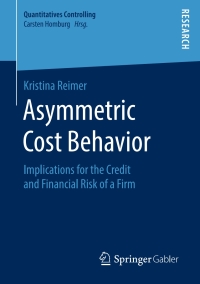Question
Acc201 APPLY THE CONCEPTS: Construct the income statement When constructing the income statement, it is important to understand that the income statement reports the revenues
Acc201 APPLY THE CONCEPTS: Construct the income statement
When constructing the income statement, it is important to understand that the income statement reports the revenues and expenses for a period of time, based on the matching concept. This concept is applied by matching the expenses with the revenue generated during a period by those expenses. The excess of the revenue over the expenses is called net income or net profit.
Coldwater Co. has compiled the following account balances from its general ledger on October 31, 20Y8 (the last day of its fiscal year).
| + Account balances
|
Use the information given to create Coldwater Co.'s annual financial statements. Construct Coldwater's income statement for 20Y8.
| Revenues: | ||
| Accounts receivableAdvertising expenseCashRetained earningsFees earnedFees earned | $Fees earned | |
| Accounts payableEquipmentInterest expenseService revenueSuppliesService revenue | Service revenue | |
| Total revenues | $fill in the blank 5640a2f66f94fdd_5 | |
| Expenses: | ||
| EquipmentNotes payableSuppliesDividendsWages expenseWages expense | $Wages expense | |
| DividendsNotes payableEquipmentInterest expenseService revenueInterest expense | Interest expense | |
| Accounts receivableCashFees earnedCapital stockRent expenseRent expense | Rent expense | |
| Accounts payableCashService revenueRetained earningsUtilities expenseUtilities expense | Utilities expense | |
| Advertising expenseAccounts payableCashNotes payablePrepaid insuranceAdvertising expense | Advertising expense | |
| Total expenses | $fill in the blank 5640a2f66f94fdd_16 | |
| Net incomeNet lossNet income | $Net income |
Feedback
From the balances above, select the appropriate revenue and expense items, and compute the appropriate subtotals.
APPLY THE CONCEPTS: Construct the Statement of Stockholders' Equity.
The statement of stockholders' equity shows the change in statement of stockholders' equity as a result of net income and any dividends. It also serves as an important link between the income statement and the balance sheet in that it translates the effects of net income into an updated number for statement of stockholders' equity. Construct Coldwater's statement of stockholders' equity for 20Y8.
| Common Stock | Retained Earnings | Total | |
| CashCommon stockBalances,October 31, 20Y8Balances, November 1, 20Y7Balances, November 1, 20Y7 | $Balances, November 1, 20Y7 | $Balances, November 1, 20Y7 | Balances, November 1, 20Y7 |
| CashNet incomeRent expenseRetained earningsNet income | Net income | Net income | |
| CashCommon stockDividendsTotal expensesDividends | Dividends | Dividends | |
| CashCommon stockBalances, October 31, 20Y8Balances, November 1, 20Y7Balances, October 31, 20Y8 | $Balances, October 31, 20Y8 | $Balances, October 31, 20Y8 | Balances, October 31, 20Y8 |
Feedback
Hover over the statement of stockholders' equity definition in the earlier step to review the construction of this statement. Remember that Net Income or Net Loss from the statement in the prior step is the linking value between these two statements.
APPLY THE CONCEPTS: Construct the balance sheet
The balance sheet, also known as the statement of financial position, shows the company's assets and the claims against those assets in the form of liabilities and stockholders' equity. Unlike financial statements that display financial performance over a given interval of time, the balance sheet is a snapshot of a financial position at a given point in time.
Construct Coldwater's balance sheet in account form for 20Y8.
| Assets | ||
| Accumulated depreciationCashNotes payableService revenueFees earnedCash | $Cash | |
| Accounts payableAccounts receivableAdvertising expenseDividendsInterest expenseAccounts receivable | Accounts receivable | |
| Advertising expenseRetained earningsSuppliesCommon stockNotes payableSupplies | Supplies | |
| Interest expenseNotes payablePrepaid insuranceEquipmentRent expensePrepaid insurance | Prepaid insurance | |
| Accounts payableAccounts receivableInterest expenseEquipmentWages expenseEquipment | Equipment | |
| Total assets | ||
| Liabilities | ||
| Accounts payableAccounts receivableCashPrepaid insuranceSuppliesAccounts payable | $Accounts payable | |
| Common stockUtilities expenseCashNotes payableFees earnedNotes payable | Notes payable | |
| Total liabilities | ||
| Stockholders' Equity | ||
| CashCommon stockFees earnedPrepaid insuranceRent expenseCommon stock | $Common stock | |
| Accounts payableEquipmentPrepaid insuranceRetained earningsService revenueRetained earnings | Retained earnings | |
| Total stockholders' equity | ||
| Total liabilities and stockholders' equity |
Step by Step Solution
There are 3 Steps involved in it
Step: 1

Get Instant Access to Expert-Tailored Solutions
See step-by-step solutions with expert insights and AI powered tools for academic success
Step: 2

Step: 3

Ace Your Homework with AI
Get the answers you need in no time with our AI-driven, step-by-step assistance
Get Started


